Blog
Why should we protect endangered animals?
Read moreEndangered animals and wildlife in Kenya
As Kenya is home to a diverse array of ecosystems and ecological zones—including forest, grassland, scrubland, dry woodland, inland aquatic, coastal, and marine areas—a wide variety of fascinating wildlife can be found throughout the country. However, many of these species have very restricted ranges and are threatened by human activities like agriculture, dam construction, livestock grazing, and deforestation, in addition to poaching, the exotic pet trade, and climate change. Here are 28 of Kenya’s endangered animals.
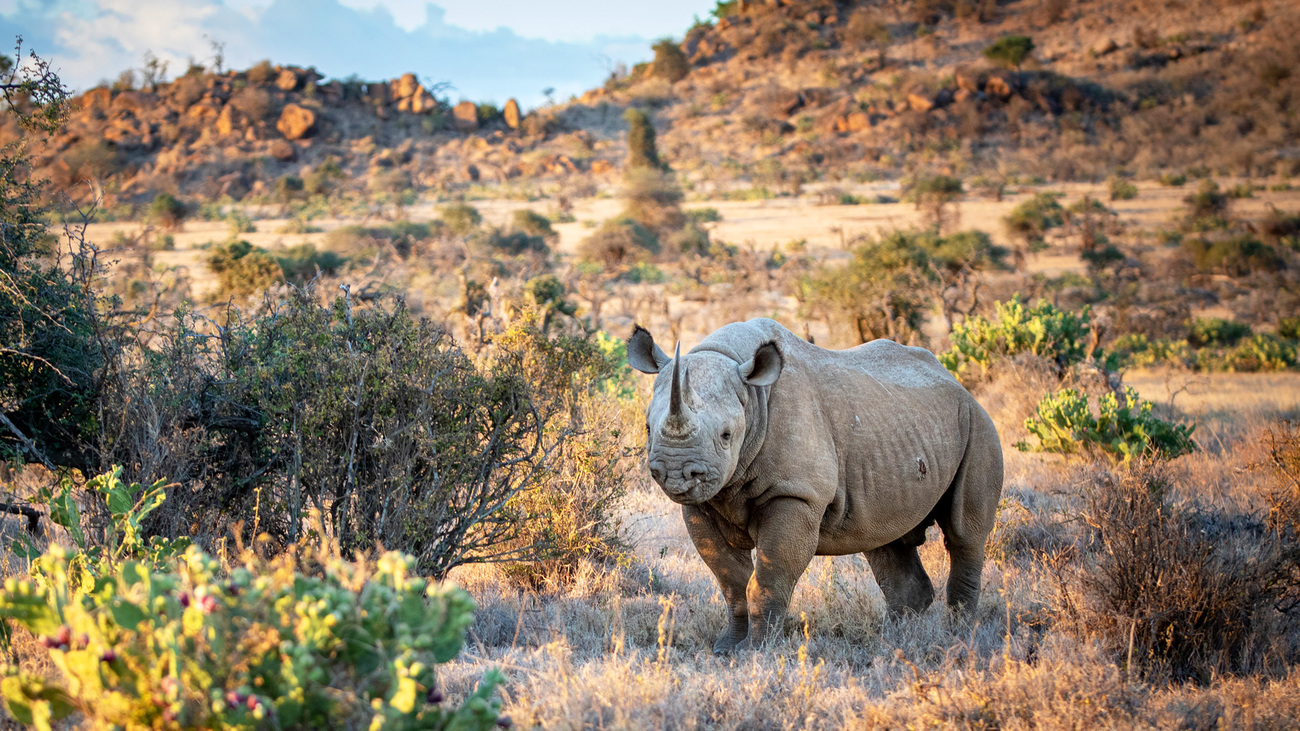
The eastern black rhino (Diceros bicornis michaeli) is a critically endangered subspecies of the black rhino. While it used to be found as far north as Sudan and across the Horn of Africa, it has survived only in Kenya and Tanzania. It has been reintroduced in Rwanda, and a small population is also found in South Africa, helped by assisted colonisation—the intentional release of a species outside its original range. The main threat to eastern black rhinos is poaching to acquire their horns for illegal trade. There are only about 583 of these rhinos left in the wild.
The northern white rhino (Ceratotherium simum cottoni) is a subspecies of the white rhino. There are only two of these rhinos left, and they live in the Ol Pejeta Conservancy in Kenya, where they are protected 24/7 by guards. Named Najin and Fatu, both remaining northern white rhinos are female—mother and daughter—which may spell the end for this subspecies. However, scientists have managed to create several embryos using frozen sperm cells from deceased male northern white rhinos. By 2024, they plan to implant the first embryo.
The martial eagle (Polemaetus bellicosus) has a range that spans much of sub-Saharan Africa, but it is rarely spotted and has been considered endangered since 2020. This huge bird of prey is recognised by its dark grey head, back, and wings and its white belly, legs, and underparts, which have black spots.
Sadly, martial eagles are often shot or trapped by farmers, and they experience poisoning both directly from humans and indirectly by consuming poisoned prey. Targeted poisoning of martial eagles, a form of human-wildlife conflict, has occurred in Kenya where they prey on domestic livestock.
Rothschild’s giraffe (Giraffa camelopardalis rothschildi) is a giraffe subspecies found in Kenya, Uganda, and South Sudan. It is classed as near threatened by the IUCN, but it is one of the most endangered giraffe populations. There are fewer than 1,400 of these giraffes left in the wild. Illegal hunting, agriculture, human encroachment, and destruction of its habitat have pushed Rothschild’s giraffe out of most of its historical range.
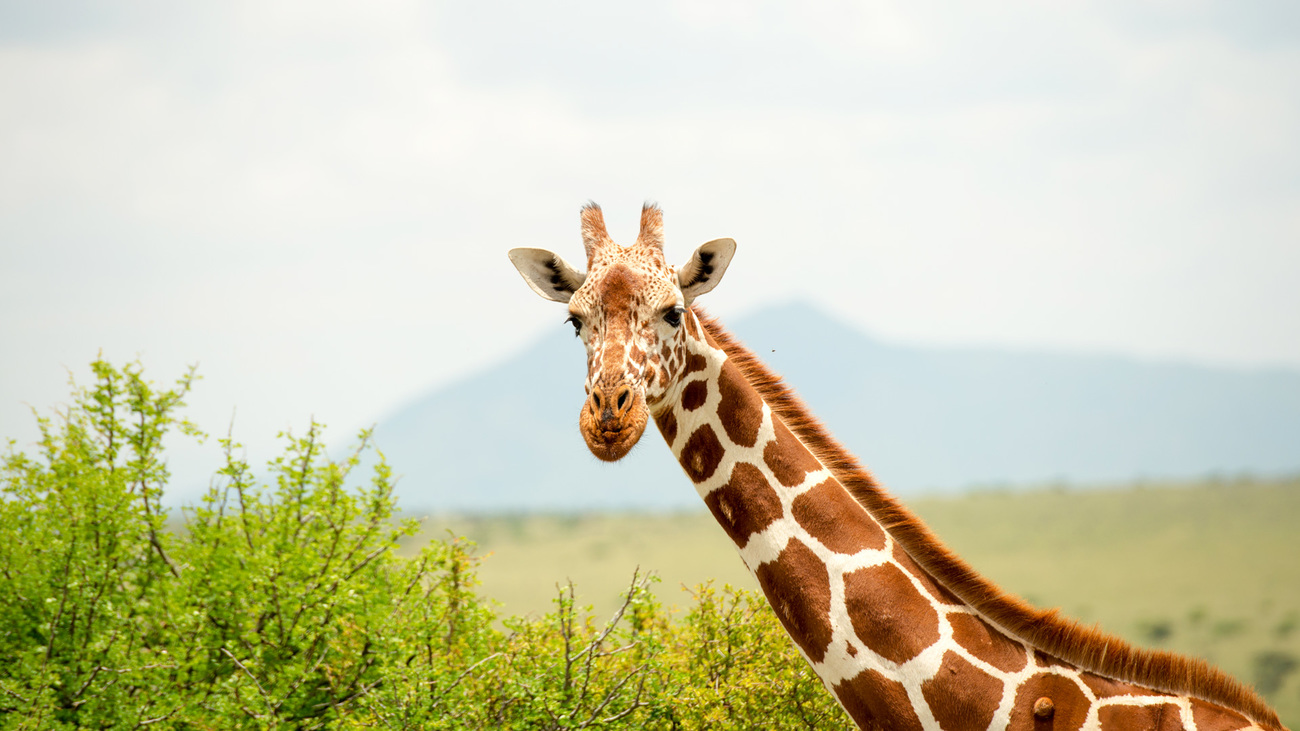
The reticulated giraffe (Giraffa camelopardalis reticulata) is an endangered subspecies of giraffe found in the Horn of Africa. There are about 11,000 of these giraffes remaining, and they reportedly experienced a 56% population decline over 30 years, as of their assessment in 2018. They likely have small numbers persisting in Somalia and Ethiopia, but they primarily remain in Kenya. The primary threats to reticulated giraffes are thought to be habitat loss, habitat fragmentation, and poaching.
The hirola (Beatragus hunteri), also known as Hunter’s antelope or Hunter’s hartebeest, is an antelope species found in Kenya. There may also be hirola in Somalia, but according to the IUCN, their presence in the country is uncertain. Hirola have been classed as critically endangered since 1996.
There are estimated to be 200 to 250 hirola remaining in the wild. Primary threats to this species include hunting, disease, drought, predation, and competition with livestock. Hirola are vulnerable to poaching due to a lack of effective enforcement of wildlife protection laws in parts of their range. The IUCN describes the species’ situation as ‘grave’.
Native to the Kenyan highlands, the Tigoni reed frog (Hyperolius cystocandicans) has a limited range and has been classed as endangered since it was last assessed in 2020. The previous assessment in 2016 categorised it as near threatened, which means the status of this frog has significantly worsened.
This small frog has experienced significant threats to the forest where it lives. Livestock grazing, conversion of forest for agriculture, and illegal logging have contributed to its decline.
The Taita thrush (Turdus helleri), also known as the Taita olive thrush or Heller’s ground thrush, is a small black bird with an orange belly. It’s found only in three tiny patches of forest in the Taita Hills of southern Kenya.
From 1994 to 2020, the Taita thrush was classed as critically endangered. Since 2021, it’s been classed as endangered. There are fewer than 1,000 Taita thrushes remaining in the wild, and they face threats of habitat loss and fragmentation. Most of the native forest in the Taita Hills has been cleared, and the parts that remain are disconnected from each other, which separates populations of this species.
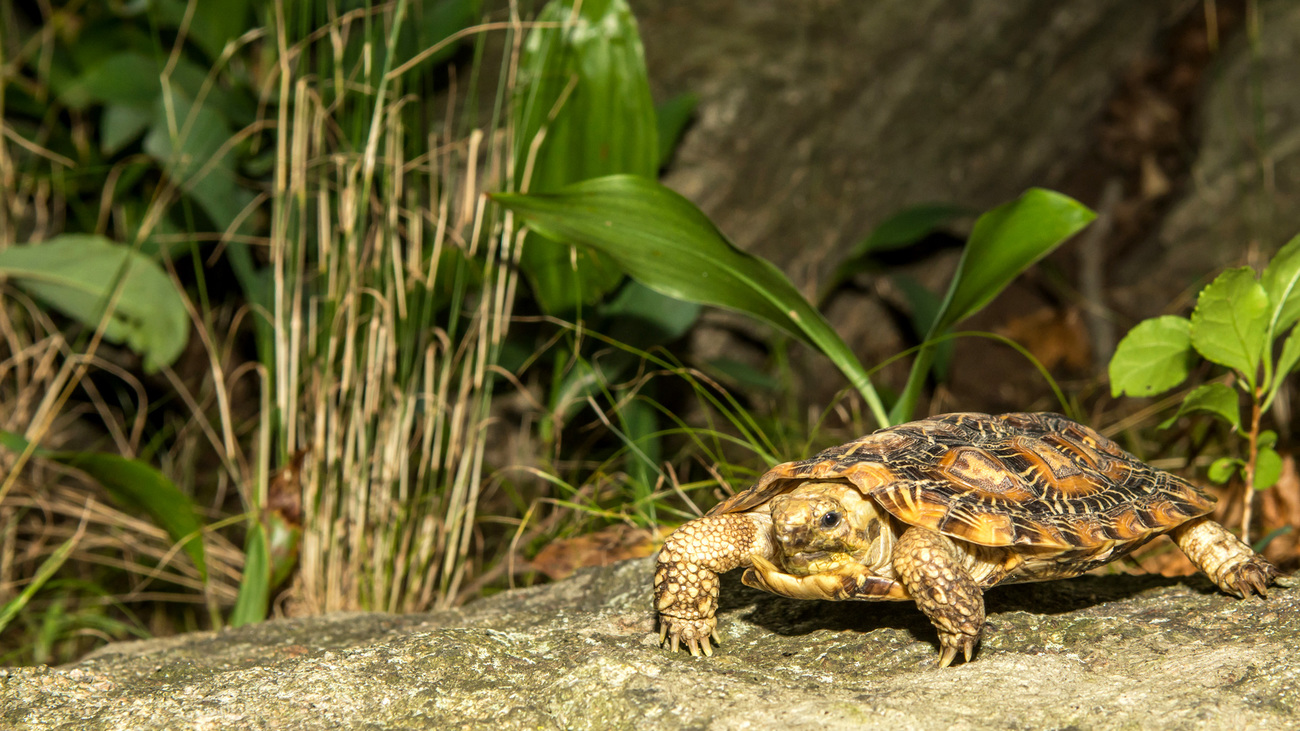
The pancake tortoise (Malacochersus tornieri) is found in isolated pockets of Kenya, Tanzania, and northeastern Zambia, including in Serengeti National Park. It’s named after the flat shape of its shell, which is thin and flexible. These tortoises are about 15 centimetres (6 inches) long.
These tortoises were first assessed as critically endangered in 2018. The biggest threat to their survival is the exotic pet trade. The destruction of rocks is also contributing to the degradation of their habitat, as pancake tortoises often make their homes in rocky areas like inland cliffs and mountain peaks.
Also known as the Usambara soft-nosed chameleon or Matschie’s dwarf chameleon, the Usambara flap-nosed chameleon (Kinyongia tenuis) is found in Tanzania’s East Usambara Mountains, and it may also live in Kenya’s Shimba Hills. This small chameleon appears brown as a male and bright orange as a female, with spots of blue and green on their scales.
This species has been classed as endangered since it was first assessed in 2013. Deforestation and agriculture are encroaching on the chameleon’s forest habitat.
The Taita Hills warty frog (Callulina dawida) is part of the rain frog family, Brevicipitidae. It’s found only in Kenya’s Taita Hills, and its range is estimated to be only about 4.3 square kilometres (1.7 square miles).
Taita Hills warty frogs have been classed as critically endangered since 2014. The remaining population of these frogs is threatened by habitat degradation due to human activities like stick-cutting and the collection of dead wood.
Sharpe’s longclaw (Macronyx sharpei) is a small bird with a brown and white back and a bright yellow belly. It lives in grasslands, often in wet areas, of central to eastern Kenya. It has been classed as endangered since 2000.
While there are about 6,000 to 15,000 of these birds remaining, Sharpe’s longclaw is experiencing rapid population decline. Their habitat is being reduced to make room for farmland, as they live almost exclusively on privately-owned land rather than in conservancies or national parks.
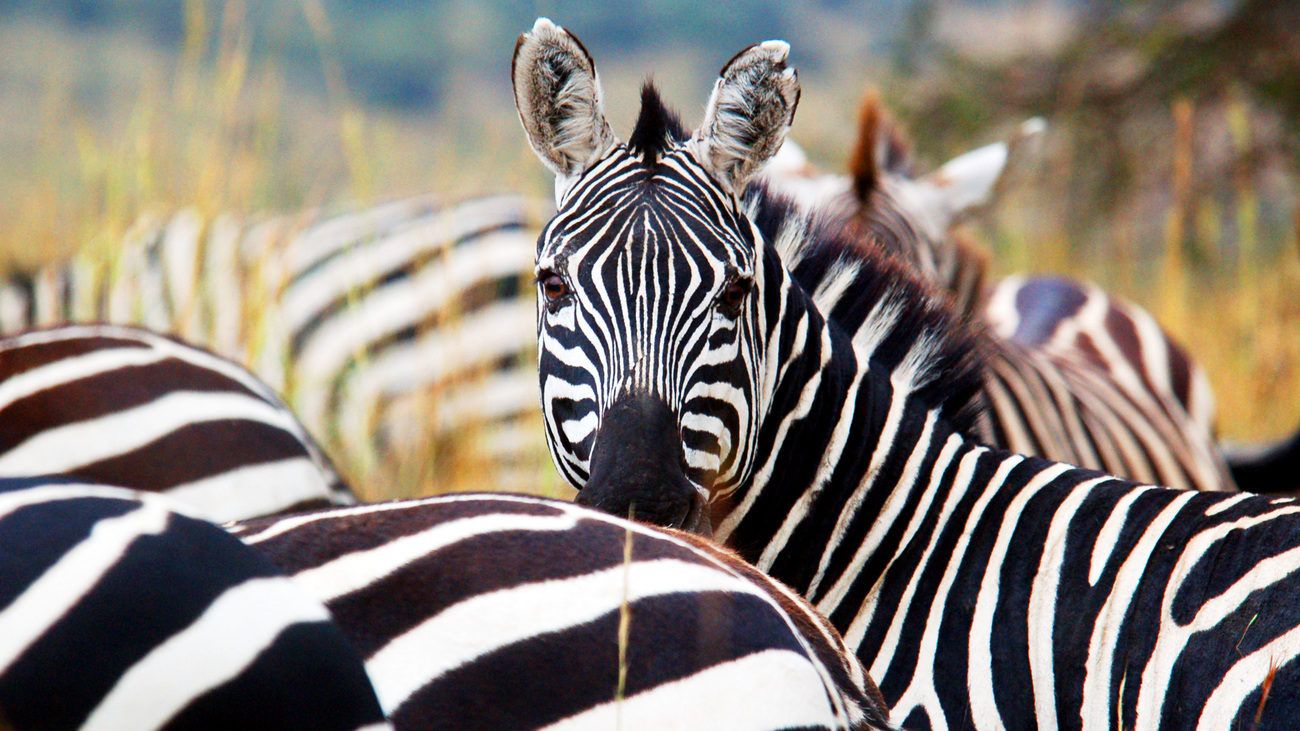
Grevy’s zebra (Equus grevyi) is one of three zebra species. There are about 1,956 of these zebras remaining across the shrublands and grasslands of Kenya and Ethiopia. Since the IUCN began assessing this species in 1986, they’ve been classed as endangered. In 2016, the IUCN reported that they experienced a population decline of 54% over 30 years.
According to Kenya’s Grevy’s Zebra Technical Committee, the top three threats to these zebras are habitat degradation and loss due to livestock grazing, competition with livestock for water and rangeland, and hunting.
IFAW has supported Grevy’s Zebra Trust (GZT) in their efforts to help zebras impacted by drought in northern Kenya.
The Tana River mangabey (Cercocebus galeritus) is a medium-sized primate with light brown fur. This species has a very restricted range—it’s found only in a stretch of forest along the Tana River in northern Kenya. There are fewer than 1,000 Tana River mangabeys remaining, and they face threats of deforestation, fires, and habitat degradation due to dam construction, irrigation projects, water diversion, and livestock. In 2020, their status was updated from endangered to critically endangered.
The Taita apalis (Apalis fuscigularis) is a small bird in the Cisticolidae family of warblers. It’s found in only three small forest fragments in Kenya’s Taita Hills, and there are fewer than 250 of the birds remaining. Since 1994, they’ve been classed as critically endangered. Most of the native forest in the Taita Hills has been cleared, severely degrading their habitat.
Also known as the Mount Kenya bush viper or Desaix’s bush viper, Ashe’s bush viper (Atheris desaixi) is a yellowish green and black venomous snake. Two isolated subpopulations of these snakes live around Mount Kenya and the northern Nyambeni range.
Since it was assessed in 2014, Ashe’s bush viper has been classed as endangered. Sadly, they are frequent victims of the exotic pet trade, and they are also experiencing habitat loss and degradation due to agriculture.
The Tana River red colobus (Piliocolobus rufomitratus) is a monkey native to a 60-kilometre stretch along the Tana River. These monkeys primarily live in trees, so they are particularly threatened by deforestation and forest fires. They also face threats of vegetation changes due to dam construction and other human activities as well as habitat degradation due to livestock.
In 2019, it was estimated that if deforestation of the area continues at its current rates, the species will experience an 80% population decline. The Tana River red colobus has been critically endangered since 2019.
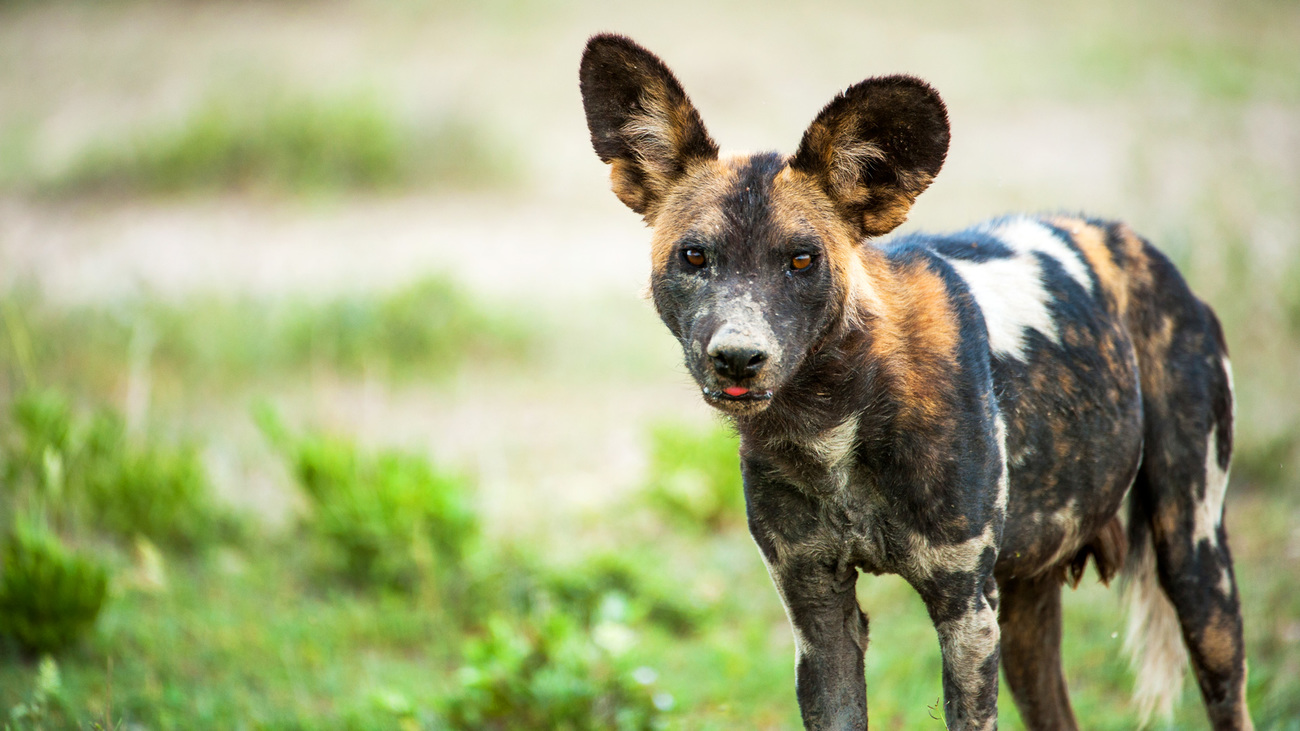
African wild dogs (Lycaon pictus) are found in isolated pockets across sub-Saharan Africa, but some of their largest populations are in Kenya—packs of wild dogs in Laikipia and Samburu, Kenya, are some of the most significant. They’re present in the Illaingarunyoni Conservancy, which IFAW has recently secured to improve landscape connectivity. These dogs have been endangered since 1990 and are rarely seen in the wild. There are about 1,400 remaining.
African wild dogs were nearly eradicated from Laikipia County in the 1990s due to disease and human-wildlife conflict. Again in 2017, these same issues almost brought them to extinction in the region. They are slowly recovering here thanks to conservation efforts.
Also known as the Mount Elgon torrent frog or the Kenya rocky river frog, Du Toit’s torrent frog (Arthroleptides dutoiti) is a small frog of the Petropedetidae family. There are fewer than 250 of these frogs remaining, and they live along the Kooitobos and Suam rivers near Mount Elgon, which sits on the Kenya-Uganda border.
Du Toit’s torrent frog is considered critically endangered and possibly extinct, as repeated surveys have failed to locate it. Its habitat has been severely degraded by logging, charcoal burning, and cultivation, and these frogs may also be impacted by the chytrid fungus that impacts many amphibian species around the world.
Clarke’s weaver (Ploceus golandi) is a small, black and yellow bird found in forests and wetlands of Kilifi County in southeastern Kenya. It has been endangered since 2000, and there are an estimated 2,000 to 4,000 individuals remaining. Threats to Clarke’s weaver include drought and climate change. Kenya is currently experiencing its worst drought in 40 years, which has contributed to the decline of many species.
The mountain reedbuck (Redunca fulvorufula) is an antelope native to mountainous areas of southern Africa, East Africa, and Cameroon. The largest parts of its range are in Kenya and South Africa.
While previously classed as least concern, mountain reedbucks gained endangered status when they were reassessed in 2016. The main threats they face are the expansion of human settlements, poaching, disturbance by livestock, and hunting by dogs.
Abbott’s starling (Arizelopsar femoralis) is a black and white bird with distinctive yellow eye rings. It’s found in a few isolated forest areas in Kenya and northern Tanzania, including around Mount Kenya. There are fewer than 2,500 of these birds estimated to remain, and while they had been categorized as vulnerable since 1994, they were reassessed as endangered in 2020. The degradation and loss of forest, including through illegal logging, poses a threat to Abbott’s starling across its range.
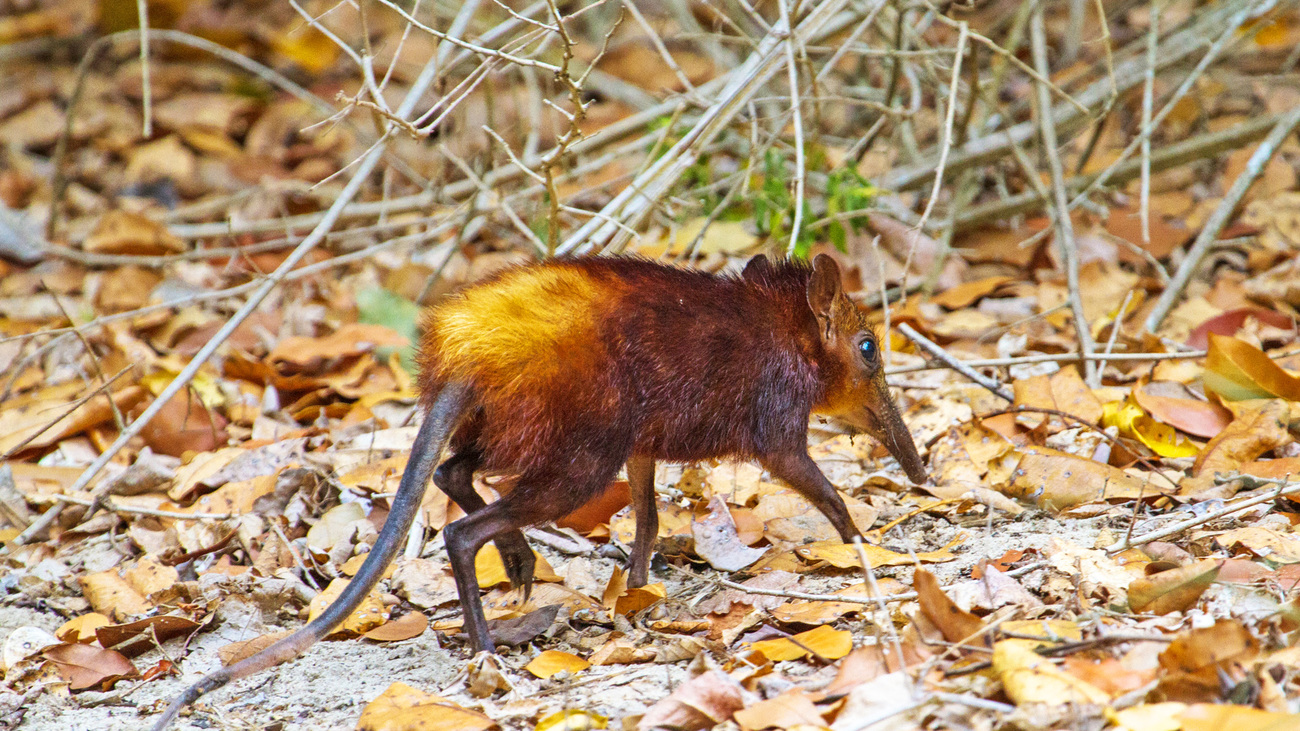
Also known as the golden-rumped sengi, the golden-rumped elephant shrew (Rhynchocyon chrysopygus) is a small, insectivorous mammal native to southern coastal Kenya, found in forests, dense woodlands, and thickets. It has been classed as endangered since 1996. There are an estimated 13,000 of these elephant shrews remaining, and the primary threat to their survival is habitat loss due to land clearing and logging.
Also known as the beisa, the East African oryx is a medium-sized antelope species found in Kenya, Ethiopia, Tanzania, and South Sudan. While it once ranged as far north as Sudan and Eritrea and westward into Uganda, it is considered possibly extinct in these countries. There are 11,000 to 13,000 East African oryx left. Hunting for its meat and hides poses a major threat to this species, as does human and livestock encroachment. They’ve been listed as endangered since 2018.
In the genus Ancylodactylus, there are three endangered species, all of which are found in Kenya—the Kenya forest gecko (Ancylodactylus kenyaensis), Kitui forest gecko (Ancylodactylus kituiensis), and Chyulu Hills pygmy forest gecko (Ancylodactylus chyuluensis). These species have limited ranges in central and southern Kenya. Deforestation, livestock grazing, firewood collection, harvesting of rock ballasts, and wildfires all pose threats to forest geckos. All three species were first assessed by the IUCN in 2022, and their population numbers are unknown.
Sokoke scops owls (Otus ireneae) are the smallest scops owls in the world. They can be grey, brown, or red-orange in colour, and they are found in forests of southeastern Kenya and northeastern Tanzania. There are 2,500 to 10,000 of these owls remaining, and they’ve been classed as endangered since 2000. Unsustainable—and often illegal—collection of wood has likely limited the Sokoke scops owl’s ability to breed. The forest in which they live is also affected by titanium mining.
Additionally, climate change is taking its toll on this species, as it’s causing more irregular weather patterns and droughts. Researchers estimate that climate change will reduce their habitat by 64% by 2080.
The giant thicket rat (Grammomys gigas) is a rodent found in the tropical forest and high-altitude shrubland of Mount Kenya. This rat measures about 132 milimetres (5.2 inches) long and has a 201-milimetre (7.9-inch) tail. Since 1996, the giant thicket rat has been listed as endangered. Unfortunately, its habitat is experiencing deforestation for timber, firewood, and conversion to agricultural land.
The Irangi puddle frog (Phrynobatrachus irangi) is a brown frog with light orange markings. Their name refers to Kenya’s Irangi Forest, one of two locations where they are found, and the fact that they may breed in temporary bodies of water like puddles.
From 2004 to 2020, this frog was listed as endangered, but it has since been reassessed as critically endangered. The subpopulation that was once found in Kimandi, Kenya, is now possibly extinct due to tea farming in their habitat—it hasn’t been seen in this area in over 40 years. This species may also be affected by dams and climate change.
Over 10,000 animal species worldwide are endangered or critically endangered. Most often, human activity and anthropogenic climate change threaten the survival of endangered wildlife.
IFAW is pioneering innovative solutions to climate change and works in Kenya and around the world to protect animals through rescue and rehabilitation, conservation, community engagement, and policy. In the Amboseli-Tsavo-Kilimanjaro landscape of East Africa, we are working to enhance habitat connectivity for elephants through our Room to Roam initiative. We are also empowering local communities in this landscape to live peacefully alongside wildlife, mentoring and mobilising over 50 local wildlife conservancies. We’re also working to safeguard Kenya’s coastal ecosystems through community-led conservation initiatives and combatting illegal wildlife trade in Kenya and Tanzania.
In addition, IFAW is empowering women in Kenya to develop wildlife-friendly livelihoods. Through our Jenga Mama project, 60 women from a rural community gained access to three-year vocational training in various careers. We also established Team Lioness, one of the first all-women wildlife ranger units in Kenya.
Every problem has a solution, every solution needs support.
The problems we face are urgent, complicated, and resistant to change. Real solutions demand creativity, hard work, and involvement from people like you.
Unfortunately, the browser you use is outdated and does not allow you to display the site correctly. Please install any of the modern browsers, for example:
Google Chrome Firefox Safari